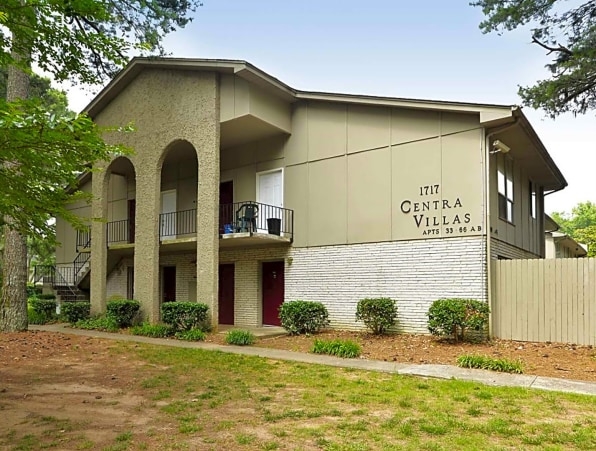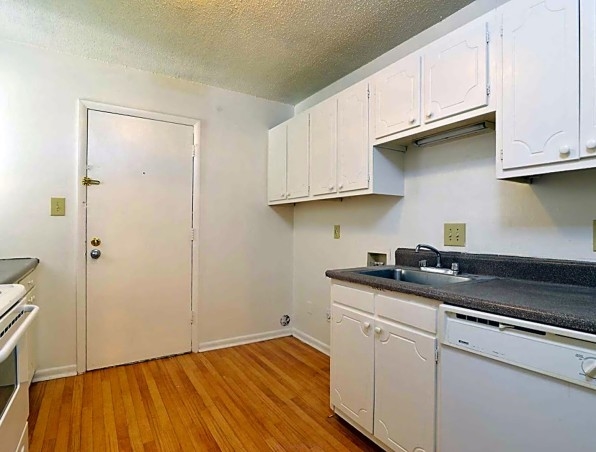A new $100 million fund aims to end homelessness. Building housing is only part of it
Building housing is an answer to homelessness issues in cities, but it isn’t the only answer. For Community Solutions, a nonprofit focused on ending homelessness, that housing has to be backed by on-site supportive services that those most vulnerable to experiencing homelessness would need. With a new $100 million fund of social impact investment— augmented with federal pandemic funding that could multiply its efforts—the organization is rolling out an innovative approach to quickly and affordably housing the homeless populations.
It starts by reconsidering the wisdom of focusing exclusively on newly built affordable housing, says Dave Foster, director of real estate development at Community Solutions, which is working to end homelessness in more than 80 cities and counties across the United States. New projects, he argues, aren’t always accessible to people vulnerable to homelessness, who often need more than just cheap rent. “The folks who are most able to navigate the system and self-resolve their homelessness are the ones who more often than not end up with the housing,” he says. Those without a credit history, internet access, or stable health, are often left at the back of the line, if they’re even in the line at all.
“You end up bringing a lot of affordable housing online and continuing to house the least vulnerable while the list of most vulnerable continues to grow. And therefore the population experiencing homelessness continues to grow,” Foster says. “So we flipped that model and work from the most vulnerable backward.”
Community Solutions’ approach is to first identify the specific populations within cities that are most vulnerable to homelessness, like veterans or individuals with mental health issues who are already known to local public health officials, and then find and convert housing that meets their needs. The organization works closely with housing organizations in cities to analyze the flows of people in and out of homelessness, and also to find ways to optimize the way housing assistance gets distributed to those most at risk of becoming homeless.
Once they understand the need and are connected to the organizations that help place people in housing, Community Solutions sets about buying already built housing on the market and bringing its rents down. By targeting existing apartment buildings in affordable neighborhoods that are also close to jobs and services, they can create this supportive housing much more affordably than building it from scratch. The organization is now building up a $100 million fund of social impact investment to expand this model, setting a goal of adding 2,500 units of housing in eight cities, including Atlanta; Denver; and Santa Fe, New Mexico.

Community Solutions’ latest project is Centra Villa, a 132-unit apartment building in Atlanta. After analyzing housing data about the city, the organization found that there was a population of about 500 veterans with federally subsidized housing vouchers who were unable to find a place to use them. Located near the Atlanta Veteran Affairs Medical Center, and with on-site property managers trained to help tenants access services, the new project creates permanently affordable and supportive housing for a particularly vulnerable population.

Though the new $100 million fund will be focused on homelessness among veterans, Foster says putting this model of supportive housing creation in place can have ripple effects.
“Once you’ve built the system to end homelessness for a particular population, it is, in fact, that same system that can then apply to driving an end to all homelessness in the community,” he says.
New sources of federal money are helping this approach spread even farther. In Santa Fe, Community Solutions worked with city officials and a local organization to acquire a distressed motel in December and convert it into supportive housing for people at risk of homelessness. Using funds from the pandemic response American Rescue Plan, the city of Santa Fe contributed about $2 million to the project, which will be used to create a fund with annual returns that cover the cost of providing supportive services like medical and mental health care on site.
Compared to the pandemic-related response many cities took to use emergency funding to pay for rooms in hotels to temporarily house the homeless, Foster says this approach has a longer-term impact. “This is a way to allow cities to take those same dollars, put them into a project where they are going to create units into perpetuity and a funding source for services,” he says.
Foster notes that this approach has limitations. For it to work financially, there have to be relatively affordable buildings on the market—a near impossibility in the cities where homelessness is most pervasive. “It’s difficult to translate this model directly into a San Francisco or Los Angeles,” he says. “But by and large, this can work in the vast, vast, vast majority of communities across the country.”
He’s hoping others will take Community Solutions’ model and apply it in more places, and says the organization views its methods as open source and accessible to whoever wants to replicate them. With more groups shifting their focus to housing specific populations, Foster says communities will be able to finally chip away at longstanding housing shortages. “This approach has the ability to double the amount of affordable housing that is brought online in communities every year,” he says.
(31)



